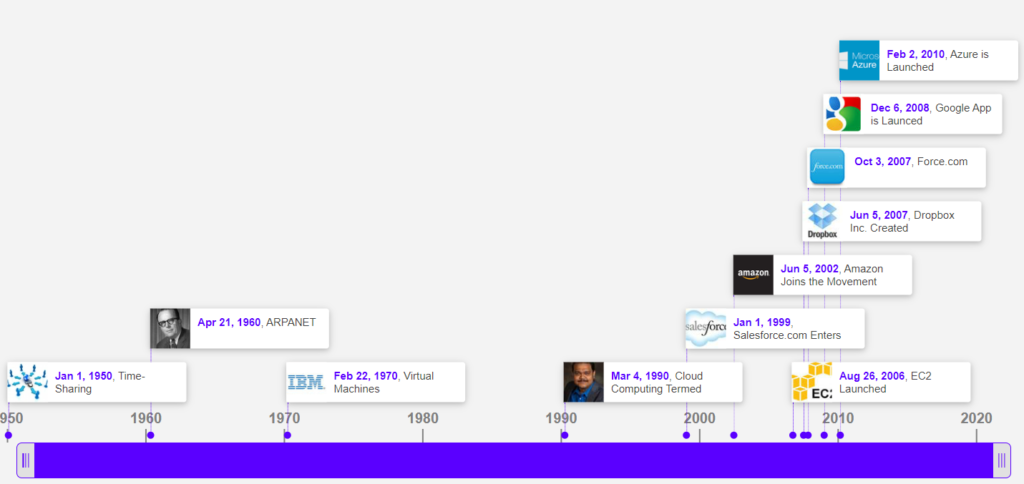I recently ran across a timeline representation of the history of cloud computing – at Cloud Computing History timeline | Timetoast timelines

One of the interesting points to me in looking over the timeline and remembering some of the historic times, there is a particular concentration of data points surrounding the 2010 decade time marker. What is the significance of this?
The big 3 current cloud service providers or hyperscalers of today are Amazon Web Services (AWS), Microsoft (Azure) and Alphabet Co (Google Cloud). Amazon started the movement with utilizing excess capacity in datacenters that was being built to handle the capacity for all of the Amazon storefront push after the Y2K scare. They quickly realized that all of the Compute, Networking, and Storage capabilities they were building in to handle the storefronts were really the bigger commodity in themselves, and so they designed and sold the excess capacity in form of services, first introduced by EC2 in 2006. Google and Microsoft followed suit shortly after this in 2008 and 2010. Google’s main business model has always been search and advertising tied to search. Microsoft is a software vendor, positioned to serve enterprise customers.
It is interesting to see how adoption and momentum factor in to the cloud story. With the first virtual machines available in 1970, the expansion of the VM on the enterprise was to reduce the footprint inside their datacenters. With VMs the large tape drive machines supporting backups of mainframes could be retired. But it took an event like Amazon reaching point of having excess capacity in their datacenters driving finding a profitable way to lease out excess capacity in compute, networking and storage. This provided momentum for cloud service providers. Each cloud service provider can lease out a virtual machine in a region close to the customer with specifications provided by the customer. This was Gen1 cloud – rental of storage, network and compute.
Competition arising among the primary 3 cloud vendors gave rise to the expansion of many additional services built on top of storage, networking and compute. Every year marks the release of new services by each cloud service provider. Current lists show AWS has 323 services, Azure mentions more than 200 services, and Google Cloud has over 100 products and services under the Google cloud brand according to Wikipedia.
Several new areas have emerged with the upward scale of cloud services. Among these include the virtual reality metaverse driven by Facebook and integrating in with several cloud providers. Artificial intelligence (AI) is a consistent area of improvement among all of the providers. The modern workplace is a great consideration in the past few years with the pandemic driving a more connected work from home experience. Blockchain is another area that is always of interest connecting financials to cryptocurrency endeavors. There are also advances in each cloud provider in hardware, providing unique solutions with greater numbers of CPUs or GPUs and specific targeted hardware.
What new inventions will drive the cloud for the next 10 years? There are some indicators, but I certainly don’t know for sure, and am very interested to keep up on all of the developments of new dot patterns in the history of cloud computing